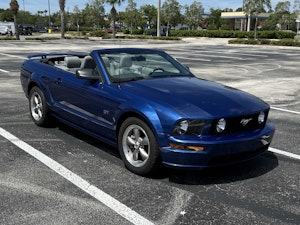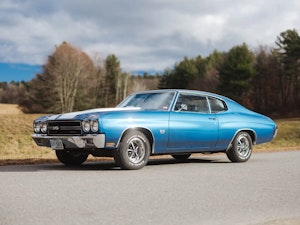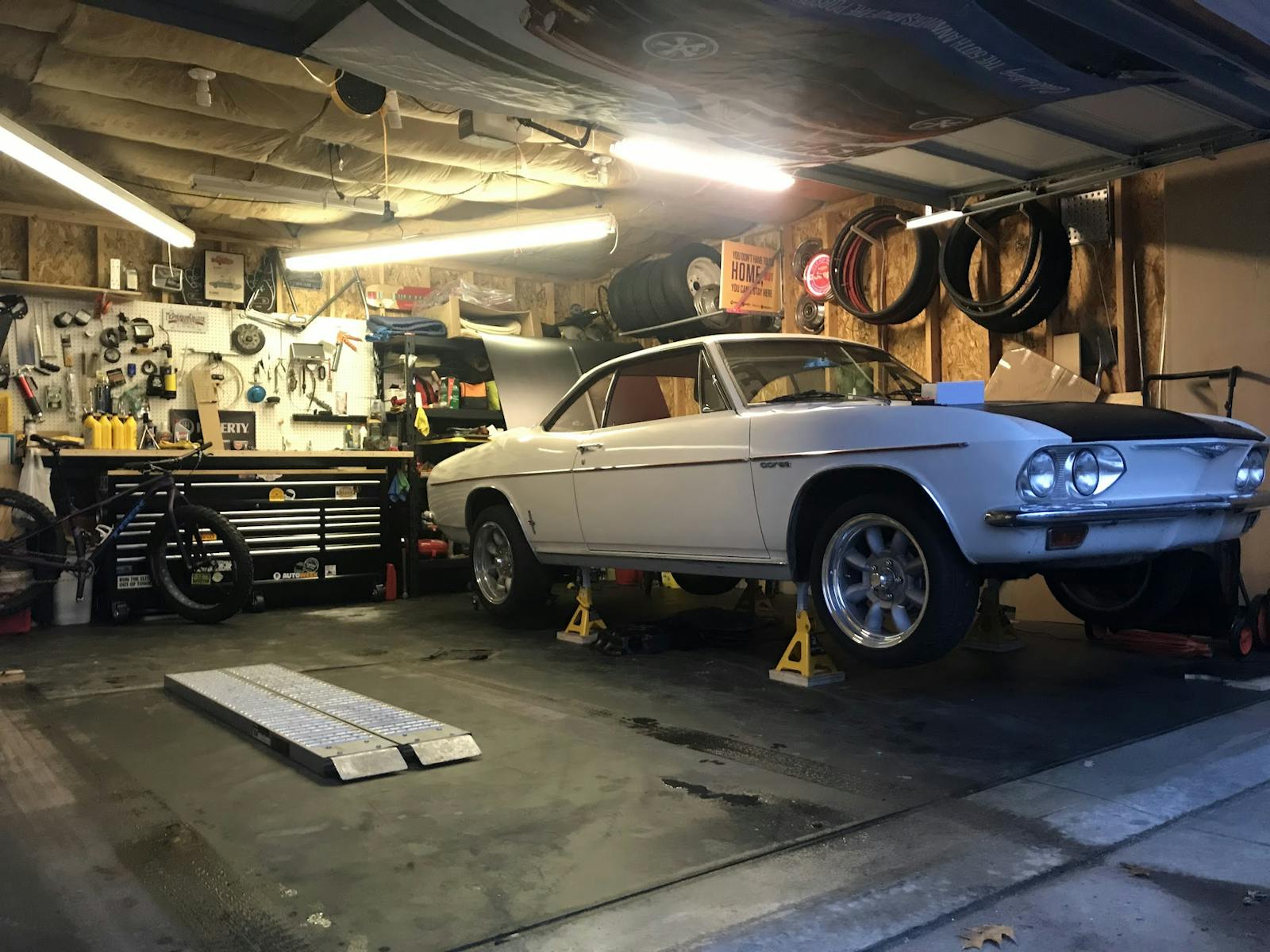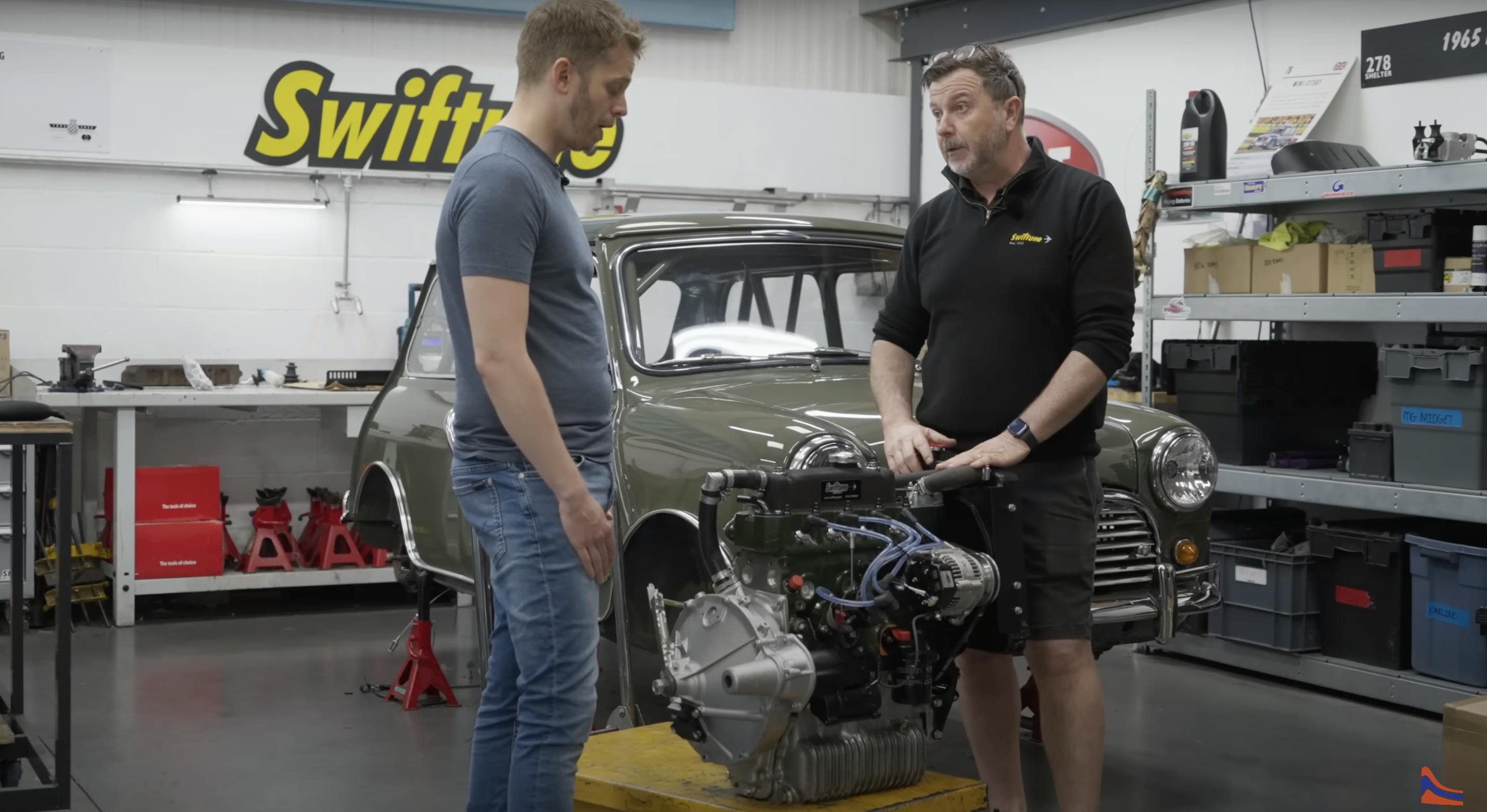Media | Articles
Nick Swift’s Tricks to a Race-Ready BMC A-Series
Going fast is a relative thing. Vintage Minis are known for being quick in the corners, but some are quick on the straights as well thanks to engines from veteran builders like Nick Swift of Swiftune. When turning up the wick for racing, every engine has its own needs and wants, and Nick was kind enough to share some of his tips and tricks for the BMC A-Series in a YouTube video for Alex Brundle.
Since Swiftune builds racing engines, the rulebook governs what he can and cannot do. To race in FIA-sanctioned competitions with other spec-built vintage Minis, both the cylinder head and engine block of this inline-four need to be original equipment or reproductions done to the OE standard. That requirement keeps the packaging the same but what’s inside that block and head is a lot less limited. There, a builder like Swift can incorporate a lot of new tech, all of it aimed at two goals: durability and power.
The rotating assembly of the engine Swift walks us through in this video is a replacement, OEM-style crankshaft with H-beam connecting rods and relatively simple-looking aluminum pistons. Keeping the factory cylinder head design prevents Swift from using a wild combustion chamber shape, so the slugs, which are only slightly dished, make sense; heavy valve reliefs or attempts to raise compression significantly are not needed. Swift even notes that his Mini engines stay close to stock displacement, since he only bores .020 of an inch past stock on the re-lined cylinders. This decision makes for a very strong core of the engine and allows for more rpm, and that is where the power comes in.


The valvetrain decides the airflow of an engine, and since engines are air pumps, a builder is wise to focus a fair amount of time and energy on making sure the air and fuel flow easily. For Swift and the A-Series, the start of that process is a custom camshaft that optimizes when the valves open and close. Up top, the valvetrain uses shaft-mounted rockers and traditional pushrods. Those may not seem all that special, but their presence has more to do with the relatively humble horsepower output of an A-Series (compared to, say, a drag racing engine) and with the priority Swift places on durability.
Marketplace
Buy and sell classics with confidence


With a set of SU carbs and aluminum velocity stacks, this is a very pretty engine that can deliver everything a Mini driver could want when they start to squeeze on the throttle approaching the apex. Of course, for a spec racing engine, that exact amount of power is confirmed by an engine dynamometer before the engines are sent out the door. Though the design of these engines is pretty archaic, the goal is 100 hp per liter. While the sound might be an acquired taste, I think this A-series sounds downright lovely at full chat. The view down those velocity stacks is pretty sweet, too. Make me wish I had an A-series in the garage again.
***
Check out the Hagerty Media homepage so you don’t miss a single story, or better yet, bookmark it. To get our best stories delivered right to your inbox, subscribe to our newsletters.
















It sounds properly angry on the dyno at the end of the video.
I have an A series in the garage, in my Westfield 11. I have built half a dozen of these engines, using some Swirtune parts.
Since I am not bound by the rules of production car or club racing, I just order what I need, and hang it on a 1380 over bore A series block, bump the compression to about 10.7:1 using AE squeeze cast pistons (they work quite well), and stick a Longman cylinder head on top (big ports, and a proven part for over 60 years). With an APT scatter patten cam, 6″ long custom Maniflow intake and DCOE 45, with a modified medium bore Mini header. I get 125 HP every time, at about 6000 RPM (max test RPM on the dyno). It’s all old school stuff, using known combinations of parts from Vizard’s book on BMC A modifications. I use the stock rods, properly machined, and the stock crank, properly prepped.
I use Swiftune roller rockers, parts from MED Engineering,other UK specialists and Fidanza for their alloy flywheels.
My personal BMC A now has more than 18,000 miles, and goes quite well, with no noticeable escaped horses or oil consumption over the 15 years since I built it.
Properly assembled, these engines are strong, and limiting the RPM limit to about 6200 RPM ensures reliability. They are simple enough for a novice to assemble one if the machine work is properly done. No need to spend $14,000 on a rebuild. There are even a couple of engine builders that can supply a “crate engine” at about 100 HP, for a reasonable price.
Engines like this will make a spridget or Mini great fun to drive, and make a 1000 lb Westfield 11 a rocket.
Westfield 11 with a ported Mazda 13B and a big Holly. Scary fast with the spridget brakes.
I have had a blast with my Sprite! I now have 3 engines, one swap meet engine I rebuilt for under $1200 with new pistons, pressed in valve seats, rebored, all new bearings, etc. In my view there is no better way to build your own vehicle with minimum outside labor cost, and to boot everyone in the old English car clique is willing to sell or trade pieces on the cheap! If that’s not incentive enough Moss Motors and British parts Northwest can supply all the bits needed to complete the task be it voltage regulators, coils, SU rebuild kits etc. and if that is still not enough, bolts, nuts, fittings and springs can be found at the hardware store.
Sure there have been aggravating issues at times but I’ll take a thought provoking breakdown more often over a modern marvel catastrophe requiring teams of specialists, weird, expensive parts and astronomical unexpected bills for repair, only to continue slogging in what might be a boring ride!